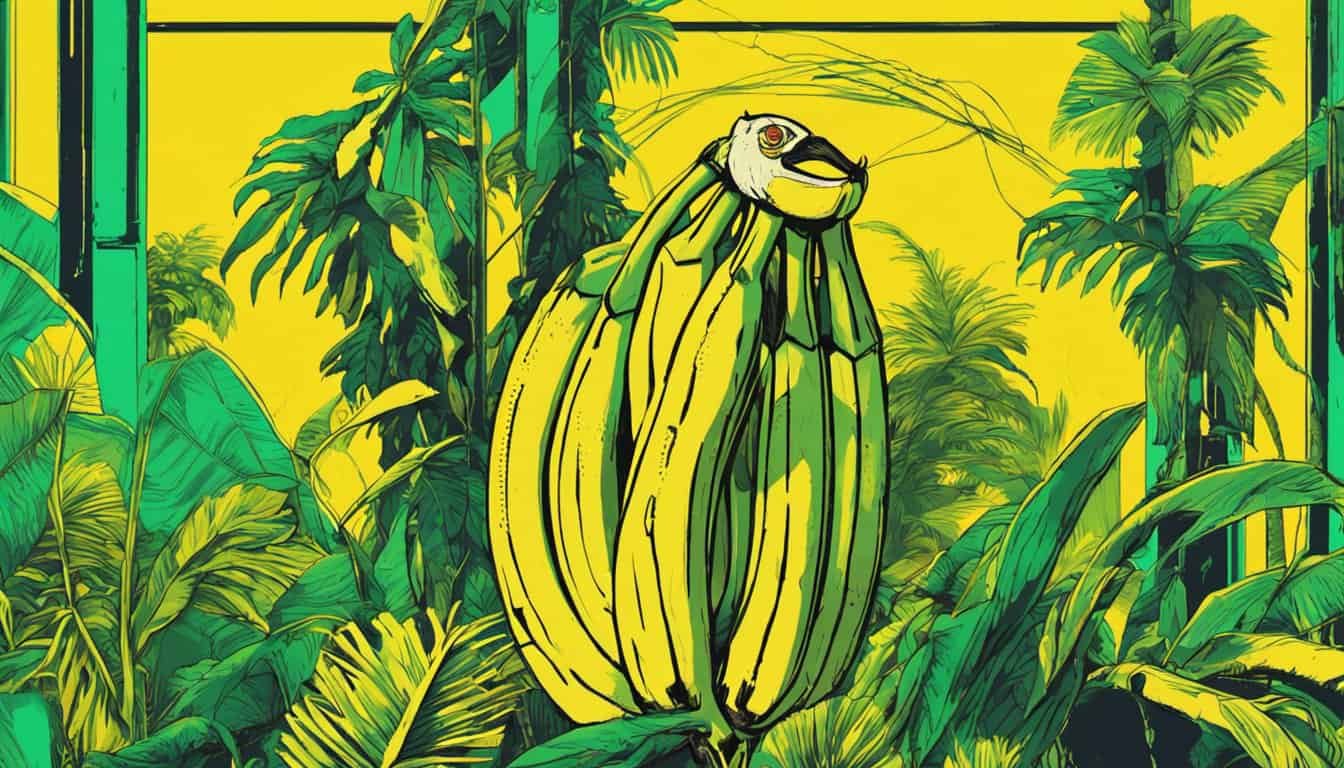A Guide to Understanding the Differences Between Bananas and Plantains
Bananas and plantains may seem like the same fruit, but they are actually quite different. While bananas are sweet and typically eaten raw, plantains are starchy and require cooking. In this article, we will dive into the world of bananas and plantains, exploring what they are, their unique differences, and their various uses and benefits. We will also examine the cultural significance of these fruits and provide some delicious recipes for you to try. So whether you’re a banana-lover or a plantain enthusiast, continue reading to learn more about these fascinating fruits.
What is a banana?
A banana is a delectable fruit that is often enjoyed as a snack or used as an ingredient in various recipes. It is cylindrical in shape and has a vibrant yellow color when ripe, with its peel being easily peeled off to reveal its soft and sweet flesh.
Bananas are one of the most widely consumed fruits in the world, with millions of tons produced annually. They are grown in tropical regions and are typically harvested when they are still green, allowing them to ripen during transportation.

Aside from their delicious taste, bananas also offer numerous health benefits. They are rich in vitamins and minerals such as potassium, which helps regulate blood pressure and promote heart health. Additionally, bananas contain fiber which aids digestion and helps keep you feeling full for longer periods of time.
Interestingly enough, bananas aren’t actually trees but rather giant herbs! This means that the trunk-like structure we often associate with banana plants is actually made up of tightly packed leaves.
Whether eaten on their own or used creatively in dishes ranging from smoothies to baked goods, it’s clear that bananas offer much more than just a tasty treat. So next time you enjoy this fruit, take a moment to appreciate all the unique qualities that make it truly special!
What is a platano, and how is it different from a banana?
Are you confused about the difference between a platano and a banana? You’re not alone. While these two fruits may look similar, they are actually quite different in taste, texture, and usage.
Firstly, let’s clarify what we mean by “platano”. Also known as plantain in English-speaking countries, the platano is a member of the banana family. However, it is typically larger and tougher than your average banana. Unlike bananas which can be eaten raw or cooked when ripe, platano needs to be cooked before consumption.
When ripe platano turns black and sweet while green plantains are starchy like potatoes. When green they are used to make chips or mashed into side dishes whereas overripe ones can be used to make desserts.
In terms of taste, bananas tend to have a sweeter flavor with a softer texture while platanos have more of a savory flavor with a firmer texture even when ripe. This makes them ideal for cooking in savory dishes such as stews or fried snacks.
So next time you’re at the grocery store picking out some fruit for your morning smoothie bowl or afternoon snack break – remember that bananas may be sweet but don’t overlook their close relative: the versatile and delicious platano!
The uses and benefits of both bananas and plantains are numerous.
Bananas and plantains are both delicious and nutritious fruits that have been enjoyed for centuries. While they may look similar, there are some key differences in their uses and benefits.
Bananas are a popular fruit that is known for its sweet taste and soft texture. They are packed with vitamins, minerals, and fiber, making them a great addition to any diet. Bananas can be eaten on their own or used in a variety of recipes, from smoothies to banana bread.

Plantains, on the other hand, are less sweet than bananas and have a firmer texture. They are often cooked before being eaten and can be used in both savory and sweet dishes. Plantains contain more starch than bananas, which makes them an excellent source of energy.
One of the biggest benefits of both bananas and plantains is their high potassium content. Potassium is an essential mineral that helps regulate blood pressure and supports healthy heart function. Both fruits also contain vitamin C, which supports immune function.
In addition to their nutritional benefits, bananas and plantains also have practical uses outside of the kitchen. Banana peels can be used as a natural fertilizer for plants or as an ingredient in homemade skincare products. Plantain leaves have medicinal properties that make them useful for treating cuts, insect bites, or rashes.
Whether you prefer bananas or plantains (or both!), these versatile fruits offer numerous health benefits along with practical uses beyond the kitchen. So next time you reach for a snack or ingredient in your recipe think about including these nutritious fruits!
The cultural significance and recipes involving bananas and plantains.
Bananas and plantains have been a significant part of cultures across the globe for centuries. Their versatility in cooking has made them a staple ingredient in many traditional dishes, and their nutritional value has made them an essential source of sustenance for many communities.
In some countries, bananas are considered a symbol of prosperity and are often used in religious ceremonies. In others, they are seen as a source of good luck or as a gift to honor guests. The cultural significance of bananas is undeniable, and their role in shaping cuisines around the world cannot be overstated.

« polish banana bread
Battle of the Banana Farm Upgrades: Which Reigns Supreme in BTD5? »
Recipes involving bananas and plantains can vary greatly depending on the region or culture they come from. In Latin America, fried plantains are commonly served as a side dish or snack, while banana leaves are used to wrap tamales or other savory foods. In West Africa, plantains are often mashed into fufu – a starchy dough that is eaten with sauces or stews.
Bananas also feature prominently in desserts around the world. Banana bread is a popular treat in North America, while banana fritters can be found throughout Southeast Asia. Bananas foster – sautéed bananas served with ice cream – is an iconic dessert that originated in New Orleans.
In addition to being delicious, bananas and plantains also offer numerous health benefits. They are high in fiber and potassium and have been linked to improved heart health and digestion.
Overall, the cultural significance and culinary versatility of bananas make them an important ingredient not just for cooking but for understanding different cultures around the world. Whether you’re frying up some ripe plantains or baking your favorite banana bread recipe– these fruits will always remain essential staples
Check out our other articles to find out even more about banana.
Whether you’re looking to learn more about bananas and plantains, discover delicious recipes involving these fruits, or understand the cultural significance of both varieties of fruit. This article has hopefully given you a good introduction into this fascinating topic! For further exploration into the world of bananas and platanos, be sure to check out our other articles to find out even more!














